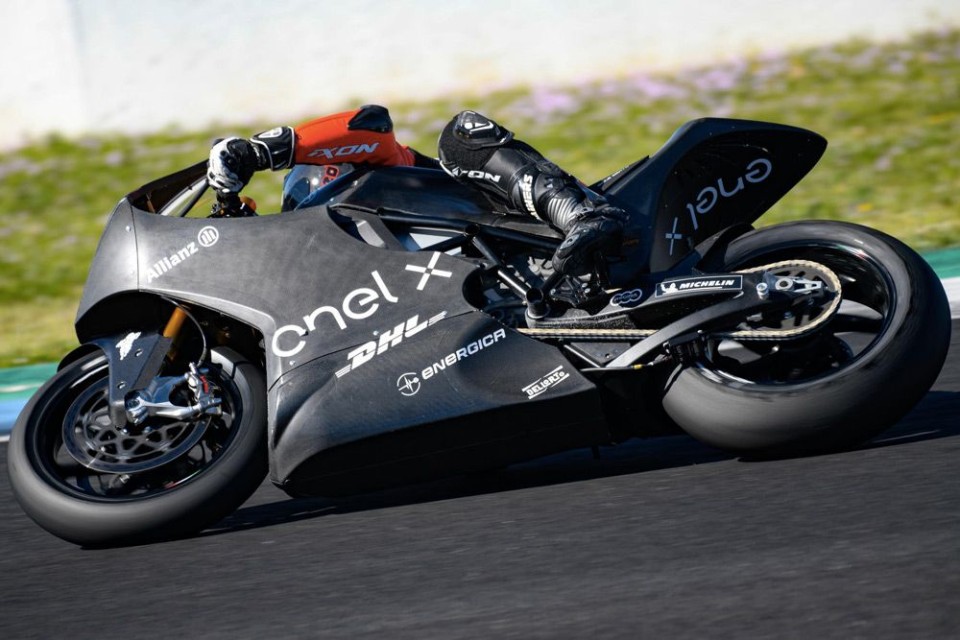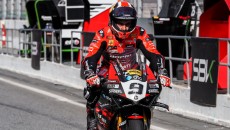The fire that broke out in the Jerez E-Paddock, which destroyed all the bikes and equipment for the MotoE championship, generated many doubts about the danger of electric vehicles. Yesterday, Dorna specified that the fire did not start with the Energica Ego used on the championship but with a short circuit whose origin is still to be determined.
Giampiero Testoni, technical director for Energica, wanted to further clarify the safety measures adopted on the motorcycles produced by the Italian company by answering several questions.
What is the risk of an Energica vehicle catching fire?
“The tests we perform on vehicles, in general, are inherited from tests that have been performed on road vehicles over the years and that meet safety standards for their proper use in all driving situations. None of our clients have ever had similar problems. In 10 years of activity in the EV world, we have never had the slightest safety problem, not even in Jerez, with regard to what happened. We are, therefore, sure and confident about the safety level of our vehicles, both on the track and on the road.”
What are the actual fire hazards of electric vehicles as compared to endothermic ones?
"As with all vehicles, whether electric or endothermic, there is always a risk. An important fact to emphasize is that the energy contained in fossil fuel is much greater than that contained in batteries."
Is the thermal runaway (n.b. a situation where an increase in temperature creates conditions which determine a further increase in temperature that, in the most serious of cases, leads to an explosion) a risk that is present for the Energica motorcycle?
“The thermal runaway is a risk that is present with every battery, not only with vehicles but also, for example, with cell phones. We take all the safety measures that prevent batteries from reaching this condition. In fact, we confirm that we have never had a single thermal runaway event in 10 years."
What are the safety measures taken to avoid such a situation with a bike?
“There are different safety devices within the battery pack and the vehicle, in general, which prevent hazardous situations. The battery is controlled both at temperature and also at voltage levels, therefore, when it's recharging, the vehicle's electronic control system does not allow it to reach high temperatures that could cause damage to the battery and a possible fire (or a thermal runaway). When being used, if the battery exceeds a certain temperature, the power of the vehicle is reduced and so is the absorption of the electrical current from the battery. This allows us to always stay well away from the risk of a thermal runaway."
Have racing bikes ever had problems with overheating?
“The racing bike has always remained within the limits of use tested by Energica throughout 2018 with our testers, who rode several thousands of kilometers on the track. The same bike has inherited the safety standard set for all our road vehicles, EU and USA approved and certified, with hundreds of thousands of kilometers of road tests performed. Safety has always been our number one priority. In addition, for racing batteries, further tests were performed, along with IRTAs, to evaluate the battery pack through extreme tests that are not even required for road vehicles. All of these tests were successfully completed, going well beyond everyone's expectations, including ours."
How does the charging process work?
“The charging process, both on the track and on the road, is carried out according to the CCS standard, an internationally certified and approved standard used in the automotive sector. At the moment, Energica is the only manufacturer in the 2-wheel sector to have adopted this standard on its vehicles, since it is an extremely complex and expensive protocol, but consequently, it is also extremely safe and tested by all car manufacturers and by main world organizations. The standard controls communication between the column and the vehicle and starts the charging process. In the event of a malfunction, the process stops immediately."
What happens when the bike charging process ends?
"Once the charge is completed, the battery contacts open, and the voltage is cut off."
What tests have been performed to ensure the safety of the race bike's battery pack in the event of a fall? What results have they given?
“We performed several tests, both for the mechanical resistance of the battery casing, as well as blunt impact tests. The results went well above our expectations and above the ones for tests traditionally performed for competition gas tanks.”
What does the Energica team do in the E-paddock?
“We assist the team technicians for any technical needs or, in the event of an accident, we support the teams for any needs or concerns regarding electronics. We are also available to teams for any consultation, always and only in relation to the bike."
What is Energica now doing to manufacture the bikes needed for the competition? What will the process be?
"The damage suffered was enormous, but right from the very morning of the accident, we took action, in order to allow the championship to be able to start, again. This is an important effort for us, but we are aware of our possibilities, and we believe in the project, so we will do everything we must to save the championship. We are working closely with our suppliers and with the sponsors, Dorna and Enel X, so that the competition can make its debut, as soon as possible. Our commitment to MotoE was immediate, and what occurred did not, in any way, undermine our confidence in the importance of the FIM Enel MotoE World Cup."









